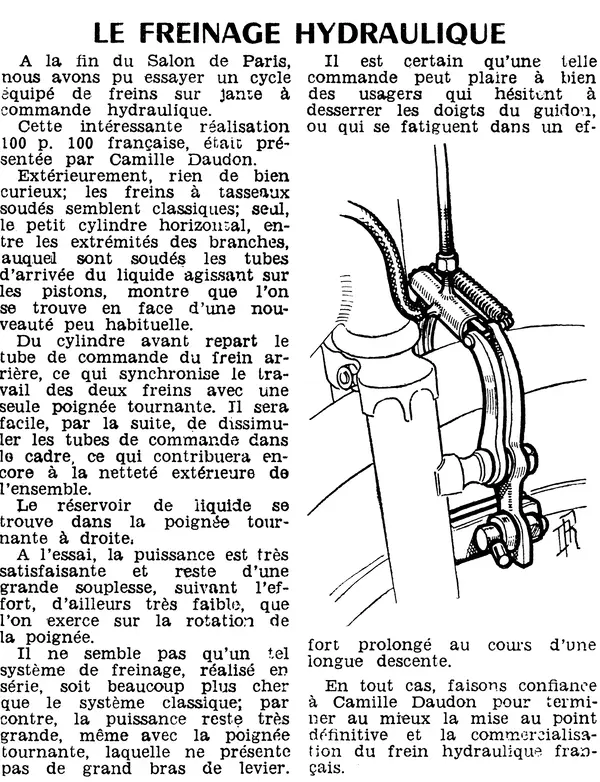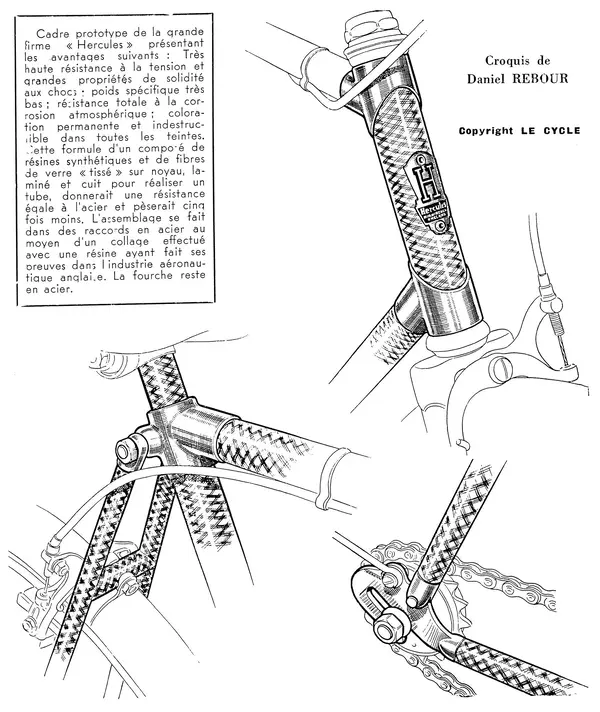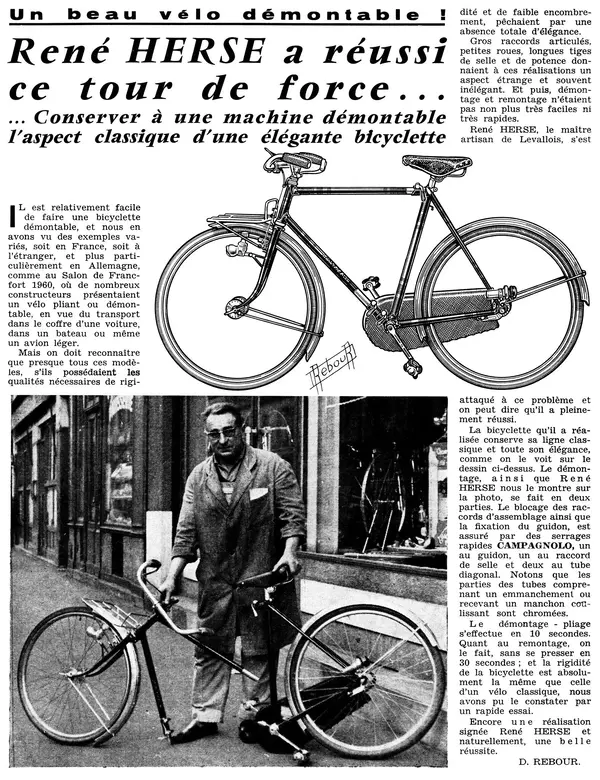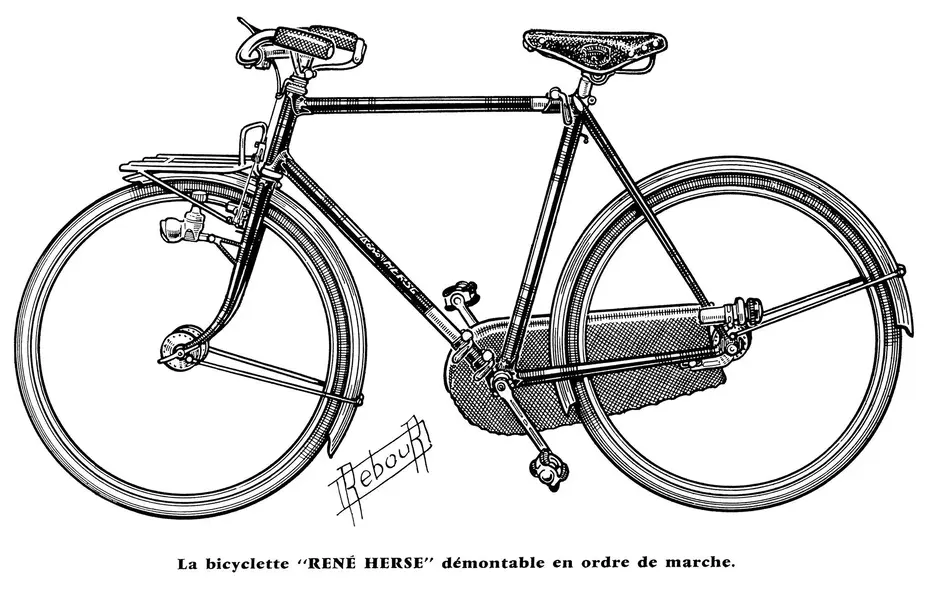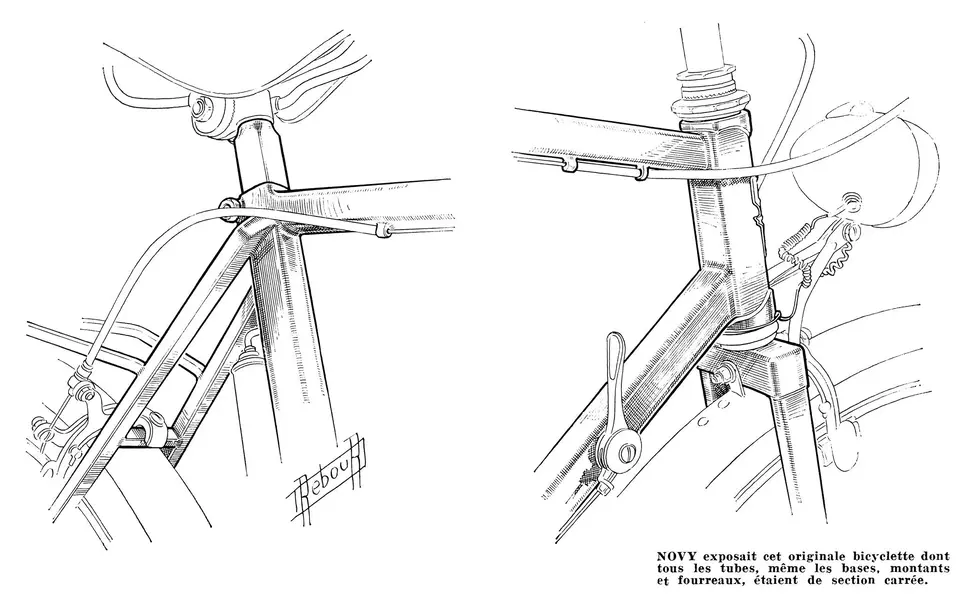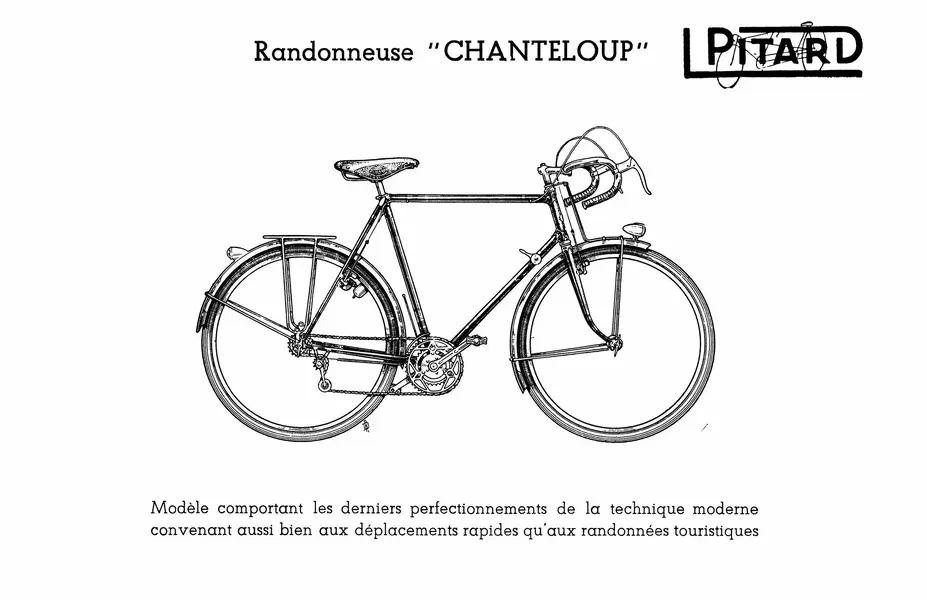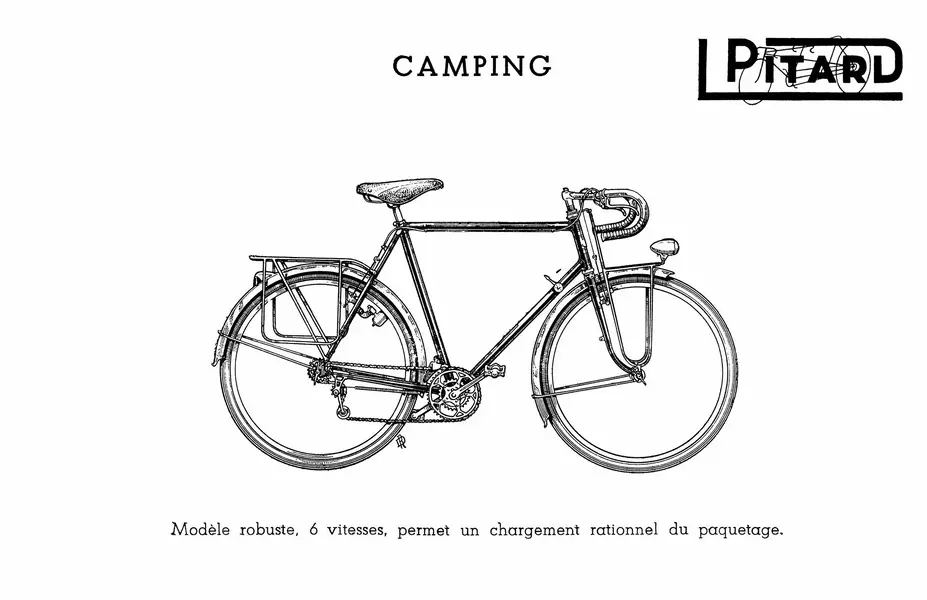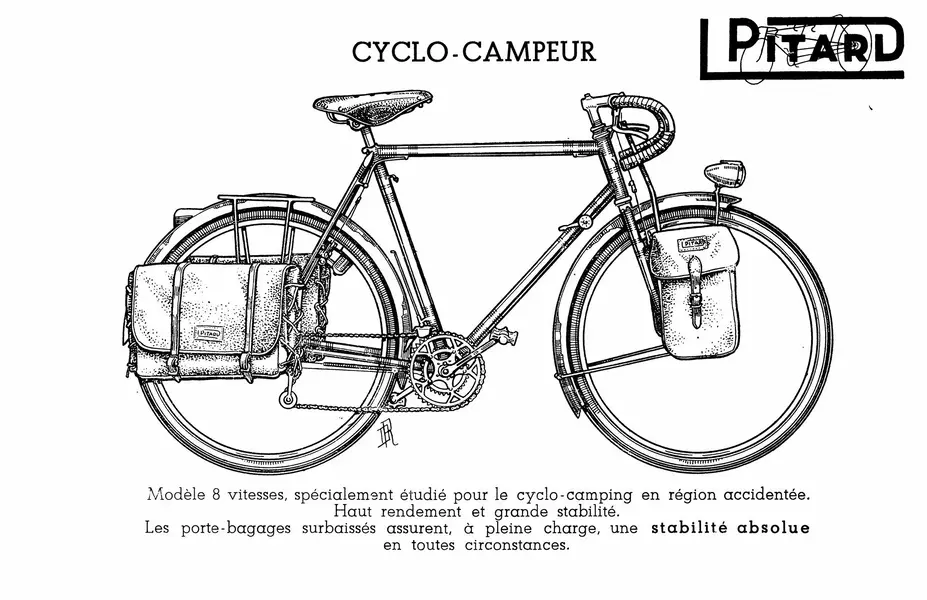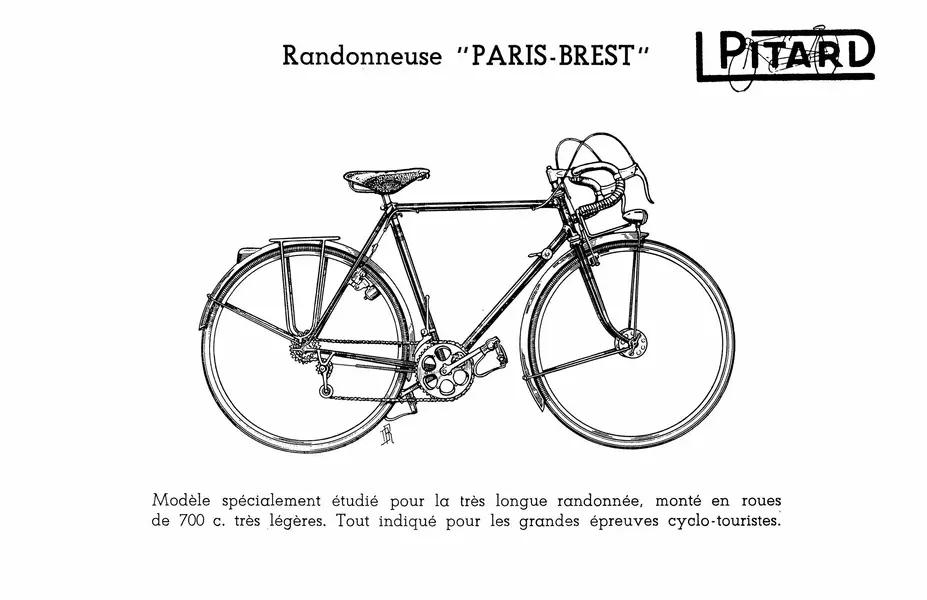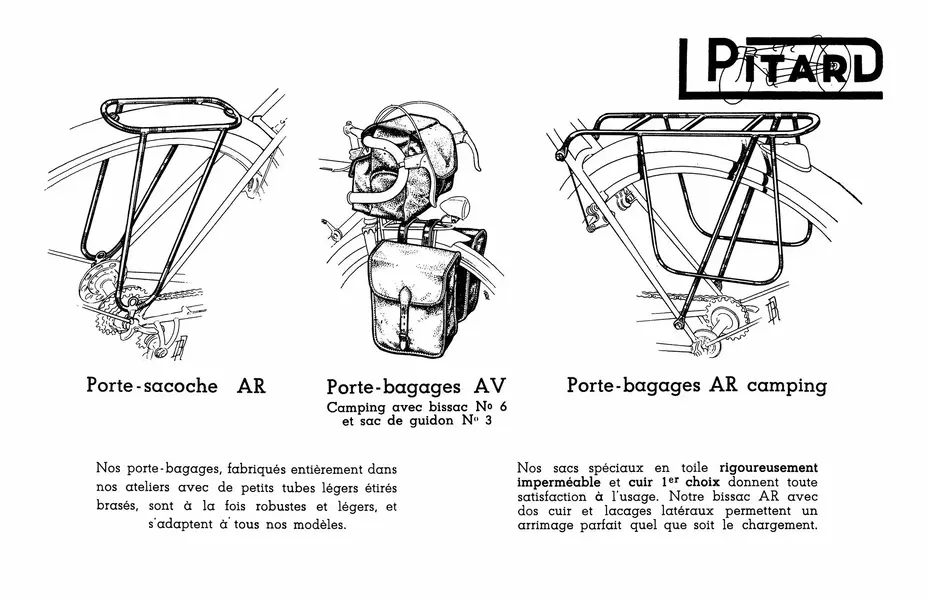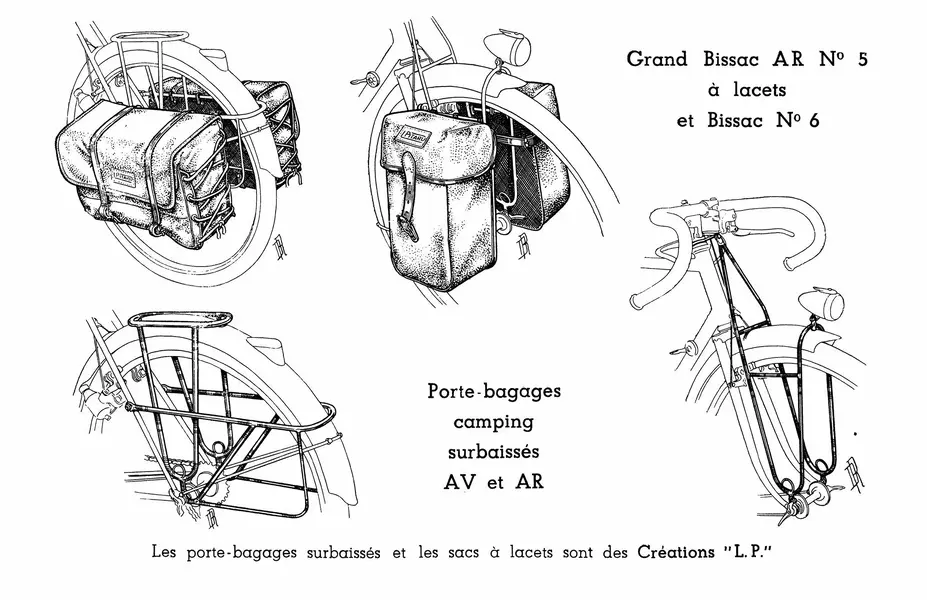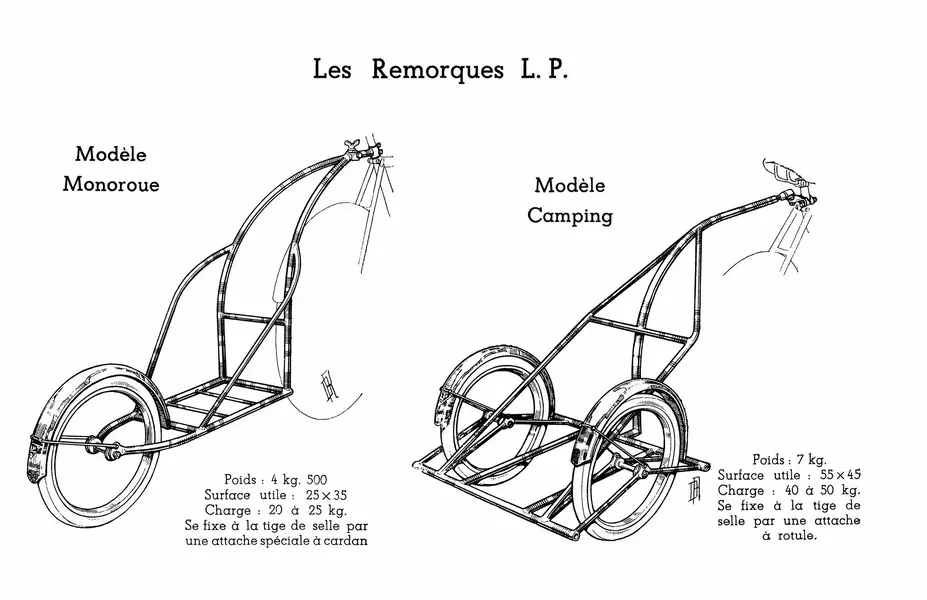Guinessisgoodforyou
rBotM Winner
French hydraulic brake, mainly for @Mickeyspinn but interesting for all, I can't find a date but it looks 50's. Translation below.
HYDRAULIC BRAKING
At the end of the Paris Show, we were able to try out a cycle equipped with hydraulically controlled rim brakes.
This interesting 100% French creation was presented by Camille Daudon.
Externally, there is nothing very curious; the welded slatted brakes seem classic; only the small horizontal cylinder, between the ends of the arms, to which are welded the tubes for the arrival of the liquid acting on the pistons, shows that we are in front of an unusual novelty.
From the front cylinder, the control tube of the rear brake comes out, which synchronises the work of the two brakes with a single turning handle. It will be easy to hide the control tubes in the frame later on, which will further contribute to the neatness of the exterior.
The fluid reservoir is located in the right-hand twist grip.
On test, the power is very satisfactory and remains very flexible, depending on the effort, which is very low, that one exerts on the rotation of the handle.
It does not seem that such a braking system, produced in series, is much more expensive than the classic system; on the other hand, the power remains very great, even with the rotating handle, which does not have a large lever arm.
It is certain that such a control can please many users who are reluctant to loosen their fingers from the handlebars, or who get tired in a prolonged effort.
In any case, let's trust Camelot to do the right thing.
In any case, let's trust Camille Daudon to complete the final development and marketing of the French hydraulic brake.
HYDRAULIC BRAKING
At the end of the Paris Show, we were able to try out a cycle equipped with hydraulically controlled rim brakes.
This interesting 100% French creation was presented by Camille Daudon.
Externally, there is nothing very curious; the welded slatted brakes seem classic; only the small horizontal cylinder, between the ends of the arms, to which are welded the tubes for the arrival of the liquid acting on the pistons, shows that we are in front of an unusual novelty.
From the front cylinder, the control tube of the rear brake comes out, which synchronises the work of the two brakes with a single turning handle. It will be easy to hide the control tubes in the frame later on, which will further contribute to the neatness of the exterior.
The fluid reservoir is located in the right-hand twist grip.
On test, the power is very satisfactory and remains very flexible, depending on the effort, which is very low, that one exerts on the rotation of the handle.
It does not seem that such a braking system, produced in series, is much more expensive than the classic system; on the other hand, the power remains very great, even with the rotating handle, which does not have a large lever arm.
It is certain that such a control can please many users who are reluctant to loosen their fingers from the handlebars, or who get tired in a prolonged effort.
In any case, let's trust Camelot to do the right thing.
In any case, let's trust Camille Daudon to complete the final development and marketing of the French hydraulic brake.
